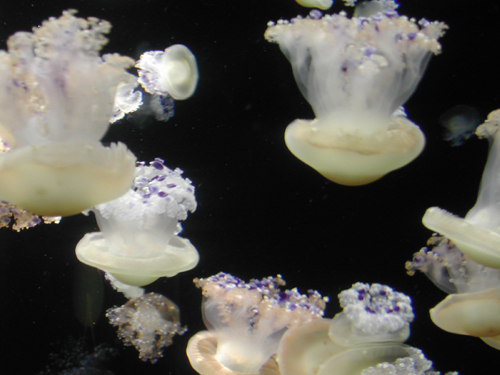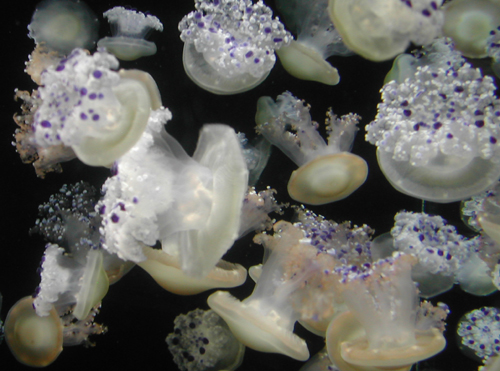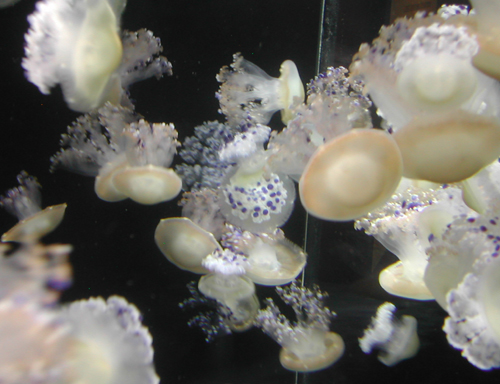
In browsing through my photo library, I stumbled on pictures from my last trip to the Monterey Bay Aquarium of a jellyfish I haven’t blogged yet, the Mediterranean jelly (Cotylorhiza tuberculata). I consulted the Monterey Bay Aquarium Online Field Guide and discovered that it isn’t listed.
That hardly seems fair!

Luckily, Wikipedia comes through in the clutch.
Cotylorhiza tuberculata is sometimes called the fried egg jelly, a name that didn’t make a lot of sense to me.
Do you eat many fried eggs with dangly purple bits? Me neither.
If anything, these jellies put me in mind of bubbles from over-enthusiastic champagne bottles.

Looking more closely at the dome end of the jellies, though, I can kind of see the yolk-like middle and the egg white ridge around it. I don’t know why the dome should be prioritized over the arms in coming up with a fanciful name, though.
Unlike moon jellies, which can just hang in the water or seem to move in slow-motion, Mediterranean jellies zip around a tank like nobody’s business. It turns out that they’re one of a small number of jellyfish species that can move autonomously rather than having to wait around for the currents to carry them.


They are adorable. I saw some recently in the big aquarium in Lisbon.
Most jellyfish I’ve encountered in the wild were ones that beached, and of those you really only see the top part, so I can imagine how they would be named after the dome.
I caught your post on google alerts. If you like the jellyfish at the aquarium, you might be interested in Jellyfish Art. They make high-end custom jellyfish aquariums. There are good pictures and video at http://www.jellyfishart.com/category/jellyfish.
I just saw these and the moon jellies at the new California Academy of Sciences in San Francisco. My friend & I spent several minutes just watching them – they had us mesmerized! We went through the entire aquarium only to stop by the jellies again before heading out.